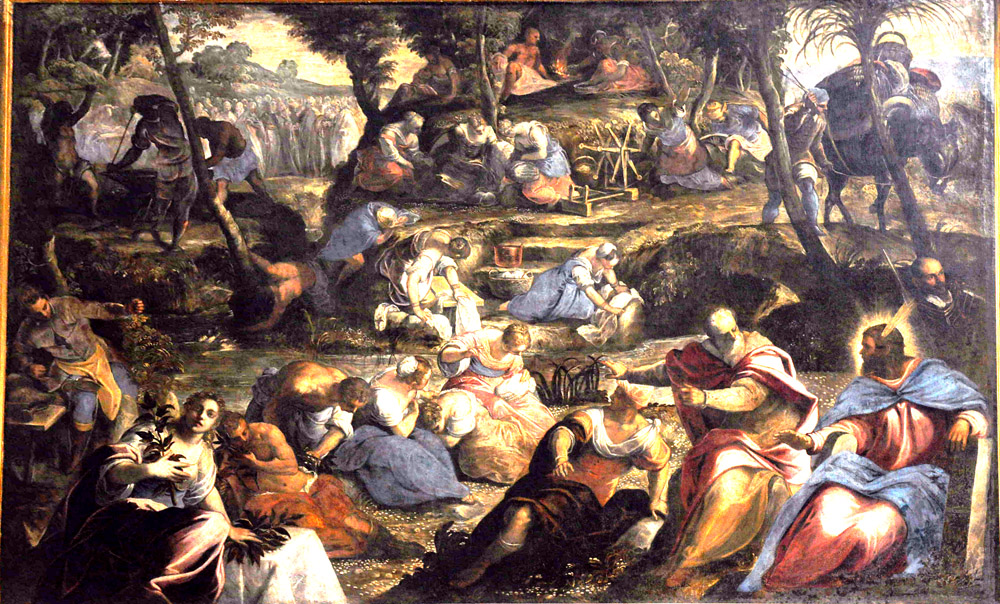Jacopo Tintoretto, The Fall of Manna

1593
Church of San Giorgio Maggiore, Venice
The Israelites in the foreground gather the flake-like pieces of manna while others behind them go about daily duties. Moses sits in the lower right corner, his face radiant following Exodus 34:29, with two particularly prominent sets of rays replacing the horns of medieval representations.
God's gift of manna is narrated in Exodus 16. Short on food, the people grumble against Moses and Aaron, so God tells Moses he will send bread and quail that the Israelites should gather each morning and evening.
Moses is the man in the lower right corner. Usually images of this era have just two sets of rays coming out of his head; making the whole head and face glow may be a nod to Luigi Lipomanno's statement, quoted in Molanus (527), that "it is not that horns came out of the forehead, but rather his forehead, nose, mouth, and chin were all radiant."
In Exodus Moses has Aaron announce God's message about the manna to the Israelites. Thus the man gesturing at Moses' right in the painting should be Aaron.
In the left corner is a hefty gal holding one olive branch in her right hand and placing another on a small table with her left. There are no olives in Exodus; the branches most likely represent the peace between God and the Israelites after the latter's grumbling. The woman herself is probably just an allegorical figure, but she could be Miriam.
This painting reprises a great many details from Tintoretto's earlier Miracle of the Loaves and Fishes. Please follow this link for a comparison of the two.
View this image in full resolution.
Read more about images of Moses, Miriam, and the fall of manna.
Photographed at the church by Richard Stracke, shared under Attribution-NonCommercial-ShareAlike license.